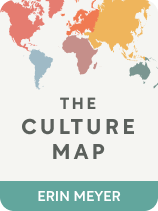

This article is an excerpt from the Shortform book guide to "The Culture Map" by Erin Meyer. Shortform has the world's best summaries and analyses of books you should be reading.
Like this article? Sign up for a free trial here .
How do different cultures approach decision-making? Why is it important to understand a culture’s preferred decision-making style?
Different cultures make decisions in very different ways. The different styles of decision-making can be a major source of conflict because each culture expects their own decision-making style to be followed, so they don’t know how to react when decisions are made in a different way.
In this article, we’ll look at the two broad categories of cultural decision-making, according to cultural communication expert Erin Meyer. We’ll also present some strategies to use when decision-making across cultures.
The Two Decision-Making Styles
In her book The Culture Map, Erin Meyer defines two cultural decision-making styles: consensus and individual.
In countries that decide by consensus, the group takes everyone’s opinion into account. All the relevant parties consider all the information, and they make a decision only when everybody agrees.
In countries that decide individually, the decision-maker may consider others’ opinions, but ultimately, the individual (usually the boss) makes the decision.
Strategies for Cultures That Decide by Consensus
Adjust your time expectations. Cultures that decide by consensus will take much longer to reach a decision than you might be used to. Build time for more meetings and more emails into your schedule. Don’t expect a decision immediately.
Practice patience. Remember that deciding by consensus doesn’t mean the majority rules. Getting everybody on the same page when people disagree initially will likely be a frustrating and time-consuming process, but well worth it in the end.
(Shortform note: Hold your meetings someplace conducive to reaching a consensus to help you tolerate longer meetings and reduce frustration. Skip the long tables, provide refreshments, and make sure you can see and hear everybody well.)
Build relationships. Staying in the loop is crucial in cultures that decide by consensus, according to Meyer. So make a point of fostering relationships with your business partners. The earlier you’re aware of how the group feels, the more opportunity you have to change their minds if necessary. You never want to be in a situation where you’re surprised by the decision.
(Shortform note: You won’t be able to come to a decision unless all the meeting participants trust each other. So try following Meyer’s trust-building strategies from Chapter 6. If you misunderstand how close you are to someone, you might interpret the information they provide incorrectly.)
Focus on the process. Remember that a decision, once made, is the final decision. Make sure you agree with the process you’re using. Are you using the right data? Does the logic make sense? Are there external factors you’re not considering? Answering these questions may be crucial to the decision’s success. (Shortform note: We tend not to be aware of the assumptions that affect our decision-making processes, so we rarely reevaluate them. Malcolm Gladwell’s Blink may help you learn how your unconscious assumptions might be influencing your workplace decisions.)
Strategies for Cultures That Decide Individually
Check your ego. If you’re not the leader, others will not consider your opinion as highly as you’re used to in the decision-making process. They might not ask for it at all. Remember that this is not a sign that your colleagues disrespect you, but merely a cultural difference. Be sure to follow all decisions, even if you disagree with them. As Meyer warns, not doing so will garner you a reputation as being difficult and insubordinate.
Move quickly. If you are the leader, get ready to make decisions without as much time or feedback as you’re used to. Others’ opinions are valuable, and you should listen to them. But wait too long to make a decision and your colleagues might view you as inefficient or weak. (Shortform note: In a separate article, Meyer warns that hierarchical cultures may interpret offhand comments as decisions and act on them. One potential way to avoid this is to explicitly delineate between suggestions and decisions.)
Remain flexible. Decisions can almost always be changed. Sometimes, they might be changed without your knowledge. In order to succeed, you must remain flexible and learn how to adapt quickly to new information. (Shortform note: How can you become more flexible? Try following Ray Dalio’s principle of “radical open-mindedness,” where you accept that you’re wrong and relentlessly find ways to increase the chances that you are right.)
Vote. If there is no clear leader, suggest a vote. Majority rules. (Shortform note: Countries that decide by consensus also sometimes follow the majority. But they tend to alter their decisions to appease the minority until there are as few dissenting opinions as possible. Countries that decide individually vote only once. If you lose, you lose.)
Strategies for When You Have Both Cultures on a Team
If you have members of both cultures on a team, how do you decide?
Instead of imposing your preferred decision-making process on a team, Meyer suggests coming up with one together.
Some questions to ask include: Who makes the decisions? Are dissenting opinions acceptable? Once a decision is made, is it set in stone?
Meyer also recommends reviewing these processes periodically to make sure they’re still working.
(Shortform note: Selecting a decision-making process is itself a decision, which could invite the cross-cultural clashes discussed in this chapter. But Meyer doesn’t address this contradiction. One potential workaround is to have the team leader select a decision-making process herself after considering the cultures represented on her team. In this case, the periodic check-ins become doubly important. If you go this route, it may be useful to review Meyer’s chapter on giving feedback prior to your first few check-ins.)

———End of Preview———
Like what you just read? Read the rest of the world's best book summary and analysis of Erin Meyer's "The Culture Map" at Shortform .
Here's what you'll find in our full The Culture Map summary :
- The eight axes you can use as a framework to analyze cultural differences
- How to better relate to those of another culture to accomplish business goals
- How the Vikings have more gender equality than we see today





